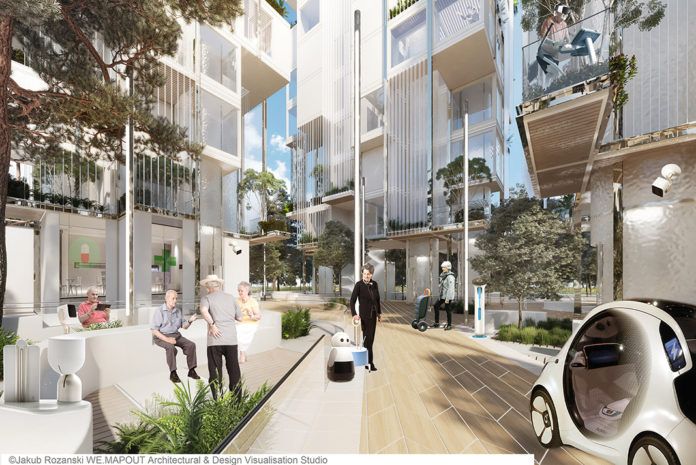In a white paper published on Monday, 21 January, Tata Steel announced its vision of the UK housing market, paving the way for a new breed of homes to populate our ‘Neighbourhoods of the Future’.
The publication, produced in partnership with the Agile Ageing Alliance, recommends a fundamental shift in the way housing development is considered in the UK. Rather than a series of rungs the consumer must climb, from starter home upwards, and then back down again in later life, buildings would be capable of adaptation – of morphing to support a growing family, and then adjusting to accommodate an ageing one. This vision of a home for life can only be achieved by looking at the needs of the occupant and how they change over time.
The report comes as the UK finds itself in a housing crisis. According to the findings of a recent year-long cross-party housing commission launched following the Grenfell Tower disaster, England needs 3.1 million new social homes by 2040, more than were built in the two decades after the end of the Second World War.[1]
Henrik Adam, chief commercial officer of Tata Steel Europe, said: “In construction, housing is seen as a very challenging area. We believe there is an urgent need for a new approach to home owning throughout our lives. The basis of this starts in designing a home where a person can live, work and play throughout their lives.
“Well-designed spaces coupled with tailored systems are the starting point of a cradle-to-grave approach to housing design. As the needs of the occupant change over time, the space can adapt with minimal disruption, thus reducing the need for a person to move and in turn strengthening the building of and continuity of the ‘neighbourhood’.
“At Tata Steel, we regard this not only as a business opportunity, but believe it is our duty to work on sustainable solutions and play a beneficial role within the society we operate in. The provision of decent, affordable homes is an expression of that belief.”
And he added: “We expect this white paper to serve as a valuable resource for all housing providers together with government – national, regional and local. Working collaboratively through the Agile Ageing Alliance our ambition, as a cross-sector collective, will be to build a prototype Neighbourhood of the Future, the first of many, to prove the concept.”
Neighbourhoods of the Future sets out to qualify what better actually looks like. Authored by pre-eminent cross-sector experts and thought leaders, the report envisages the development of “smart” intergenerational age-friendly neighbourhoods. These neighbourhoods would comprise ‘cognitive homes’ which are affordable, sustainable, easier and more efficient to construct and be connected directly with the high-tech systems tailored to meet the diverse needs of an ageing population.
With the acceleration of new digital technologies designed to make lives easier and more connected, the report proposes a rethink about how the UK’s housing stock is financed, built and updated.
One of the report’s contributors, Matt Cooper, a specialist in Modern Methods of Construction (MMC) at Arup Group, said: “The creative pioneers of the new generation of MMC not only have the opportunity to alleviate our housing shortage, but to change the way housing is delivered. A house is just a house, but homes are part of communities. Throughout our lives, the way we use our home changes. With adaptable and agile regeneration capabilities built in by design, MMC could be the game changer. Within the next 10-20 years, it may not only halt the downward spiral in our housing market, but act as the catalyst for a new social economy.”
With clever modular designs, a house can be installed in days and can be replaced, adapted or reconfigured equally efficiently. Tata Steel is developing housing systems which could provide quality, adaptable modular designs, allowing householders to upgrade and customise homes.
Lord Best, chair of the All-Party Parliamentary Group on Housing and Care for Older People, said: “With a large, ready-made market that the unimaginative house building industry is failing to address, there are massive opportunities for creating homes for everyone. Government, local and central, stands to gain from incentivising and supporting a major growth in this fledgling sector, not least in collaboration with housing associations. But the tipping point – when “rightsizing” becomes the norm for those in their 60s and 70s – will arrive when a new generation of entrepreneurs take up the challenge. A market that is worth over £6 billion a year beckons. And with it comes the great prize that both older and younger generations can live in homes that make their lives better.”
[1] https://england.shelter.org.uk/__data/assets/pdf_file/0005/1642613/Shelter_UK_-_A_vision_for_social_housing_full_interactive_report.pdf




